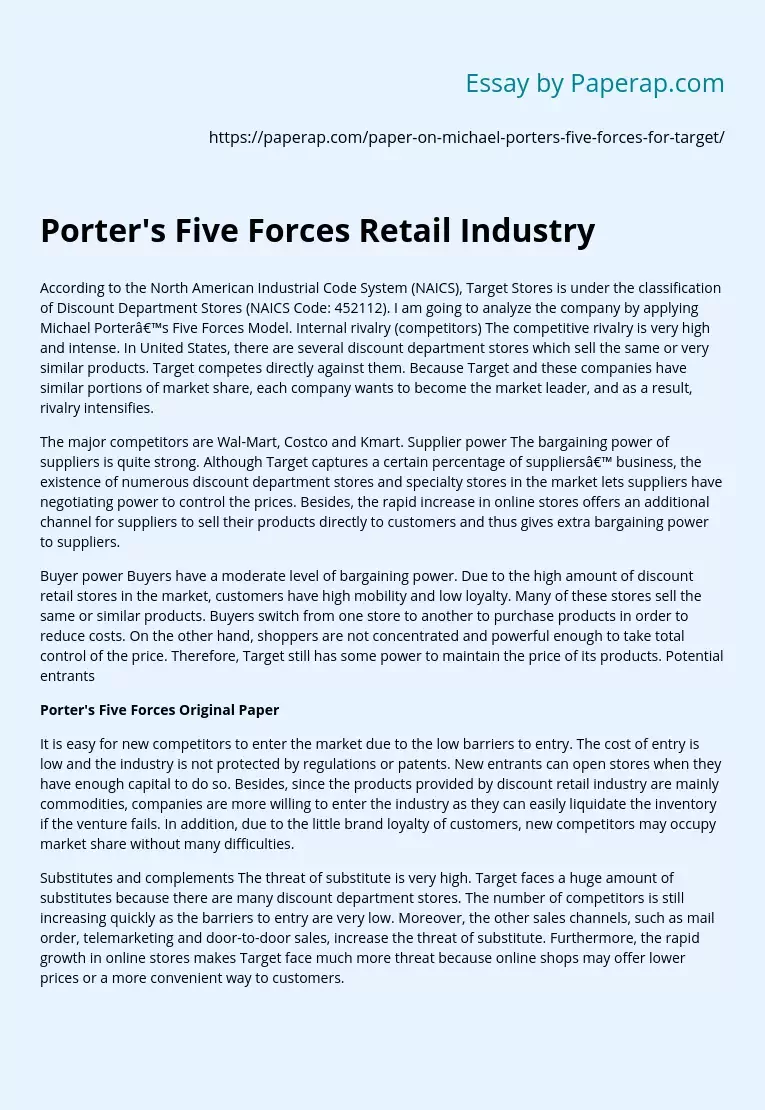Porter's Five Forces Retail Industry
According to the North American Industrial Code System (NAICS), Target Stores is under the classification of Discount Department Stores (NAICS Code: 452112). I am going to analyze the company by applying Michael Porter’s Five Forces Model. Internal rivalry (competitors) The competitive rivalry is very high and intense. In United States, there are several discount department stores which sell the same or very similar products. Target competes directly against them. Because Target and these companies have similar portions of market share, each company wants to become the market leader, and as a result, rivalry intensifies.
The major competitors are Wal-Mart, Costco and Kmart. Supplier power The bargaining power of suppliers is quite strong. Although Target captures a certain percentage of suppliers’ business, the existence of numerous discount department stores and specialty stores in the market lets suppliers have negotiating power to control the prices. Besides, the rapid increase in online stores offers an additional channel for suppliers to sell their products directly to customers and thus gives extra bargaining power to suppliers.
Buyer power Buyers have a moderate level of bargaining power. Due to the high amount of discount retail stores in the market, customers have high mobility and low loyalty. Many of these stores sell the same or similar products. Buyers switch from one store to another to purchase products in order to reduce costs. On the other hand, shoppers are not concentrated and powerful enough to take total control of the price. Therefore, Target still has some power to maintain the price of its products.
Potential entrants
Porter’s Five Forces Original Paper
It is easy for new competitors to enter the market due to the low barriers to entry. The cost of entry is low and the industry is not protected by regulations or patents. New entrants can open stores when they have enough capital to do so. Besides, since the products provided by discount retail industry are mainly commodities, companies are more willing to enter the industry as they can easily liquidate the inventory if the venture fails. In addition, due to the little brand loyalty of customers, new competitors may occupy market share without many difficulties.
Substitutes and complements The threat of substitute is very high. Target faces a huge amount of substitutes because there are many discount department stores. The number of competitors is still increasing quickly as the barriers to entry are very low. Moreover, the other sales channels, such as mail order, telemarketing and door-to-door sales, increase the threat of substitute. Furthermore, the rapid growth in online stores makes Target face much more threat because online shops may offer lower prices or a more convenient way to customers.
Porter's Five Forces Retail Industry. (2019, Dec 05). Retrieved from https://paperap.com/paper-on-michael-porters-five-forces-for-target/

